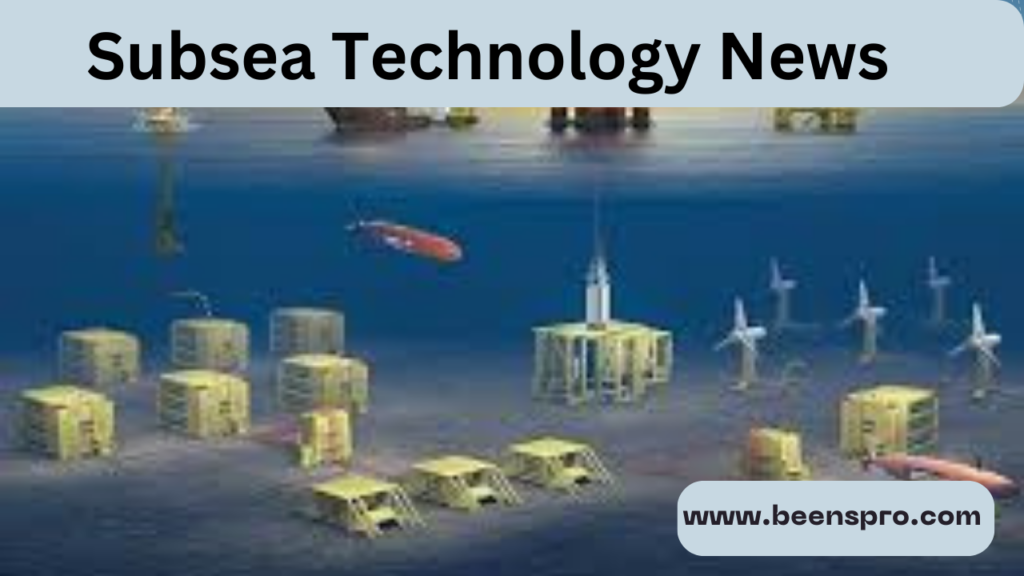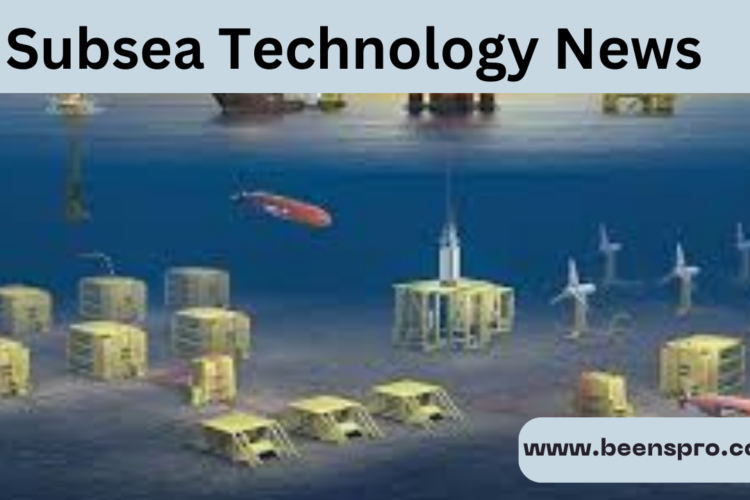
Subsea technology is an ever-evolving field crucial to industries like offshore oil and gas, marine engineering, and deepwater exploration. Continuous advancements in subsea systems, robotics, and engineering are enhancing the efficiency and safety of offshore operations. In this article, we explore the latest trends and innovations in subsea technology, covering everything from subsea pipeline systems to underwater robotics. This guide will provide valuable insights into how subsea technology is shaping the future of the marine industry.
Introduction to Subsea Technology
Overview of Subsea Technology
Subsea technology refers to the systems, equipment, and solutions deployed for offshore operations that occur beneath the sea. This includes everything from subsea pipelines to underwater robotics used for tasks such as inspection, maintenance, and deepwater exploration. With a primary focus on offshore oil and gas operations, subsea technology is essential for drilling in deepwater areas, enabling efficient resource extraction.
How Subsea Technology Impacts Offshore Industries
Offshore industries such as oil and gas, marine engineering, and even renewable energy are increasingly reliant on subsea systems to operate safely and efficiently. Offshore drilling platforms and subsea production systems rely heavily on subsea technology for installation, maintenance, and the safe extraction of oil and gas. Advances in subsea systems have led to more reliable and cost-effective operations, reducing the risks associated with offshore drilling.
What is Subsea Technology?
Understanding the Role of Subsea Technology
At its core, subsea technology includes any tools, systems, and equipment used for offshore operations, especially in deeper, more challenging environments. These systems are designed to operate at significant depths and in harsh environmental conditions. Technologies used in offshore oil and gas drilling are often designed to withstand extreme pressures, temperatures, and corrosive conditions, ensuring the safety and functionality of subsea equipment.
How Subsea Technology Affects Offshore Drilling
Subsea systems play a pivotal role in offshore drilling by enabling deeper penetration into the earth’s crust. Subsea engineering involves the design and construction of subsea structures like pipelines, manifolds, and risers, which transport oil and gas from the seabed to the surface. These systems also ensure that drilling operations can continue efficiently and safely even in the most challenging environments, including deepwater exploration.
How is Subsea Engineering Evolving?
Innovations in Subsea Engineering
Subsea engineering has made significant strides in recent years, largely due to the rapid development of subsea systems and deepwater technology. The integration of autonomous underwater vehicles (AUVs), advanced sensors, and new materials has improved the performance of subsea equipment. Subsea pipeline technology has also evolved, with innovations that make installation and maintenance more efficient. New materials that can withstand higher pressures and temperatures are helping engineers build more durable and reliable subsea systems.
The Role of Automation in Subsea Engineering
Automation is revolutionizing subsea engineering, particularly in the areas of underwater robotics and remote-controlled operations. Subsea robotics, such as ROVs (Remotely Operated Vehicles) and AUVs, are being used for a wide variety of offshore tasks, including inspections, repairs, and installations. These robots can work autonomously or with minimal human intervention, reducing operational risks and improving the safety of offshore crews. The use of automation in subsea engineering also increases efficiency and reduces operational costs.
What are the Latest Trends in Subsea Systems?
Subsea Pipeline Technology
Advancements in subsea pipeline technology have significantly improved the transportation of oil, gas, and other resources from the seabed to the surface. Modern subsea pipeline systems are designed to handle deepwater environments and maintain the integrity of the materials being transported. The use of flexible risers, monitoring systems, and corrosion-resistant materials ensures that these pipelines can operate efficiently and safely over long periods. In addition, subsea pipelines are now equipped with subsea monitoring systems that provide real-time data to ensure system integrity and reduce the risk of failure.
The Future of Subsea Monitoring and Communication Systems
As subsea operations move into deeper and more remote areas, monitoring and communication systems are becoming more critical. Innovations in underwater communication technology, such as acoustic sensors and fiber optics, allow for continuous data transmission between subsea systems and offshore platforms. These systems help operators monitor the health of subsea equipment, detect potential problems, and maintain continuous communication in harsh underwater environments. This allows for quicker response times and enhanced safety.
How Does Subsea Technology Contribute to Deepwater Exploration?
Subsea Solutions for Deepwater Exploration
Subsea technology has made it possible to explore and extract resources from depths previously considered unreachable. The ability to drill at extreme depths, often miles below the surface, has opened up vast new areas for resource extraction. Subsea systems are used to support these deepwater drilling operations by providing the necessary infrastructure for extracting oil and gas from deep beneath the seabed. Advanced drilling techniques, such as managed pressure drilling, combined with subsea robotics and real-time monitoring, are making deepwater exploration more feasible and cost-effective.
Challenges in Subsea Engineering for Deepwater Projects
Deepwater exploration presents numerous challenges, such as extreme environmental conditions, high pressures, and the risk of equipment failure. Subsea engineers must develop systems that can withstand these harsh conditions, ensuring that equipment remains functional throughout long operations. Subsea engineering for deepwater projects requires innovative solutions for safety, reliability, and efficiency. For example, subsea systems are designed to endure intense pressures and prevent the risk of catastrophic failures during operations.
What Are the Benefits of Using Subsea Robotics in Offshore Technology?
Subsea Robotics and Automation in Offshore Operations
The integration of subsea robotics into offshore operations has transformed the industry. ROVs and AUVs can perform inspections, repairs, and installations with minimal human intervention. This not only increases the efficiency of subsea operations but also ensures that operations are safer for workers. Robotics play a significant role in reducing the need for human divers, who are often exposed to dangerous conditions while working at great depths.
Case Study: The Role of Autonomous Underwater Vehicles (AUVs)
Autonomous underwater vehicles (AUVs) are playing an increasingly important role in subsea exploration and operations. These vehicles are used for surveying, data collection, and inspection of subsea structures. They can operate independently for extended periods, collecting data that would otherwise require human intervention. This has drastically reduced operational costs and increased the speed at which data can be collected and analyzed.
How Is Subsea Technology Shaping the Future of Marine Engineering?
The Impact of Subsea Technology on Marine Engineering
Innovations in subsea technology greatly influence marine engineering, particularly in the areas of underwater robotics, subsea systems, and deepwater exploration.
The integration of these technologies enables more efficient operations, reduced risks, and improved productivity. Marine engineers now rely on subsea solutions to design safer, more efficient offshore structures and equipment.
Sustainability in Subsea Technology
The future of subsea technology focuses on sustainability, emphasizing the development of energy-efficient systems and reducing the environmental impact of offshore operations. Designers are creating subsea systems to be more energy-efficient, thus reducing the carbon footprint of offshore industries.
Innovations like renewable energy integration and eco-friendly materials are helping the subsea industry meet environmental regulations and sustainability goals.
Key Technologies Driving the Subsea Industry
Underwater Robotics and ROVs
Underwater robotics, such as ROVs and AUVs, are the backbone of many subsea operations. These robots perform a variety of tasks, from subsea pipeline inspections to maintenance and repairs. They are equipped with high-definition cameras, sensors, and tools to carry out complex tasks that were once only possible through human intervention. Their ability to operate in harsh conditions makes them invaluable in subsea technology.
Marine Technology Innovations in the Subsea Sector
In addition to robotics, other key innovations are shaping the subsea industry, including advanced subsea monitoring systems, flexible pipeline technologies, and enhanced drilling methods. Marine technology innovations continue to evolve, offering new ways to increase efficiency, reduce costs, and improve safety across subsea operations.
Conclusion
The subsea technology industry is poised for continued growth and innovation, with advances in robotics, subsea systems, and deepwater exploration. As the demand for offshore resources continues to increase, subsea engineering will play an even more vital role in ensuring that these resources are extracted safely and efficiently. The future of subsea technology will likely be shaped by greater automation, sustainability efforts, and the continued development of innovative systems that make subsea operations safer and more efficient.
FAQs
What is subsea technology?
Subsea technology encompasses all tools and systems used in offshore and underwater environments to enable safe and efficient exploration, extraction, and monitoring. This includes subsea robotics, pipeline systems, monitoring equipment, and more.
How does subsea robotics improve offshore operations?
Subsea robotics, such as ROVs and AUVs, perform tasks like inspections, maintenance, and repairs. By reducing the need for human intervention in dangerous deepwater environments, these robots increase safety and efficiency.
What are subsea monitoring systems?
Subsea monitoring systems involve sensors and data collection tools used to monitor the health and performance of subsea equipment, such as pipelines and drilling systems. These systems help detect issues early, preventing costly failures.
What challenges does subsea engineering face?
Challenges in subsea engineering include harsh environmental conditions, high-pressure depths, corrosion, and the need for reliable, long-lasting equipment. Engineers must develop technologies that can withstand these conditions.
How do subsea systems contribute to deepwater exploration?
Subsea systems are essential for deepwater exploration as they provide the infrastructure needed for drilling, resource extraction, and real-time monitoring. These systems help overcome the challenges of working at great depths.
